Jeff Immelt's 16 transformational years at GE
 |
| Jeff Immelt, GE's chairman cum CEO |
I led a team of 300,000 people for 6,000 days. I led through recessions, bubbles, and geopolitical risk. I saw at least three “black swan” events. New competitors emerged, business models changed, and we ushered in an entirely new way to invest. But we didn’t just persevere; we transformed the company. GE is well positioned to win in the future.
The changes that took in the world from 2001, when I assumed the company’s leadership, to 2017 are too numerous to mention. The task of the CEO has never been as difficult as it is today. In that vein, my story is one of progress versus perfection. The outcomes of my decisions will play out over decades, but we never feared taking big steps to create long-term value.
For the past 16 years GE has been undergoing the most consequential makeover in its history. We were a classic conglomerate. Now people are calling us a 125-year-old startup—we’re a digital industrial company that’s defining the future of the internet of things. Change is in our DNA: We compete in today’s world to solve tomorrow’s challenges. We have endured because we have the determination to shape our own future. Although we’re still on the journey, we’ve made great strides in revamping our strategy, portfolio, global footprint, workforce, and culture. GE is famous for creating and religiously implementing processes for managing virtually everything we do. The task of transformation is no different. But my aim in this article—written on the eve of my announcement to transition the leadership of the company—is to share what I’ve learned more broadly about how to lead a giant organization through massive changes. There are several lessons.
First, you must be disciplined and focused. You need a point of view. Your initiatives should be interconnected—and it’s the leader’s job to connect the dots for everyone in the organization. All the major initiatives we implemented during my tenure as CEO were aimed at making GE one of the 21st century’s most valuable technology-driven industrial companies—one that can grow; one that can generate greater productivity for ourselves and our customers.
The second lesson concerns the journey a leader must embark on before undertaking a transformation. You have to go through a period of rewiring your brain—getting yourself to the point of profoundly believing that the world is changing and that the survival of your company depends on either anticipating the change or being in the vanguard of those reacting to it.
Third, you have to get people in your organization to see the need for change as existential. Fourth, you have to be all in—you must make a bold, sustained commitment to the transformation.
Fifth, you must be resilient. I subscribe to the words of the great philosopher Mike Tyson, who said, “Everyone has a plan until they get punched in the mouth.” It is so difficult to predict events. It is difficult to sustain transformation during tough times, but it’s the only way to create a better future.
Sixth, during the transformation you have to listen and act at the same time. You need to allow new thoughts to constantly come in, and you need to be open to the reality that your organization will have to pivot when it learns something new, while still having the courage to push people forward.
Finally, you must embrace new kinds of talent, a new culture, and new ways of doing things. We have hired tens of thousands of people—managers at all levels; software developers and engineers; data scientists; and folks in sales, marketing, HR, and other functions—many of them outside the United States. In 2001, 43 per cent of our workforce was outside the United States; today 65 per cent is.
Before delving into each lesson, I’ll describe the transformations we’ve undertaken.
The transformations
During my time at the helm, we did five things that were transformative. We radically changed our portfolio by focusing on our core industrial businesses and divesting slower-growth, low-tech, and nonindustrial businesses (except for the portion of GE Capital that supports our industrial businesses). We reestablished GE as a technology company: I more than doubled our investment in R&D. We became a truly global company, with a strong local presence in the 180 countries we serve. We became a major force in the technologies that will drive productivity in this era: the industrial internet and additive manufacturing. And we made GE a vastly simpler company in terms of how it runs—it now has much less administration and shorter cycle times, is more decentralized, and is more willing to let people deep in the organization who are close to their markets take risks without having to undergo multiple reviews.
All these transformations dovetailed to a certain extent. They were intended to focus us on creating value for customers by making our core businesses leaner, faster, more technical, and more global, and putting them on the cutting edge of the digital age. They have positioned the company to be more valuable over time.
Even before becoming CEO, I believed that the company couldn’t simultaneously be good at media, pet insurance, and making jet engines. We had come out of an era when many at GE believed that a good manager could manage anything. I didn’t buy that. I thought that companies—and business leaders—were good at certain things.
When I became CEO, the world was changing. The 9/11 tragedy had a dramatic impact on several of our businesses. The power and pension bubbles—big drivers of our earnings growth in the late 1990s—came to an abrupt end. And in the background, the Enron saga made transparency a priority for every company.
Our portfolio was simply too broad and too opaque. One business had no idea what another business did. No one in leadership really understood the GE Capital balance sheet. And many of our industrial businesses had commoditized.
Another theme of our transformations was the desire to use our scale to drive growth and efficiency. I have long felt that nothing is worse than a big company that can’t grow organically. I never wanted GE to be a $100-billion-plus company that had flatlined on organic growth. We conceptualized the GE Store, a global knowledge exchange. The idea is to build capabilities that can be shared across our businesses: horizontal strengths that can be harnessed to create scale-based innovation and dominant global distribution.
Connected to that were my beliefs that the days of 4% annual growth in the developed economies were over and that the forces of economic nationalism would only gain strength. When GDP is growing by 4 per cent a year, no business is hard. When GDP is growing by 1 per cent a year, no business is easy, so you’ve got to be percolating new and different ideas. That meant figuring out how to innovatively leverage technologies that would allow us and our customers to achieve leaps in productivity. And it meant getting into faster-growth parts of the world at scale.
"We were a classic conglomerate. Now people are calling us a 125-year-old start-up."
Finally, simplification was all about reallocating resources to fund more growth and identify and solve customers’ problems better. When companies are slow, it is typically a sign that their costs are in the wrong place. One of the reasons big companies fail is that they don’t think they can afford something and aren’t willing to free up the resources to make bold moves. We are investing heavily in making GE a digital industrial company. Last year we put about $4 billion into developing our analytics software and machine-learning capabilities and another $2 billion into building a leadership position in additive-manufacturing equipment and services—an emerging field that is going to revolutionize manufacturing. We had to run leaner in other places to make those investments.
Now I’ll turn to what I’ve learned about leading transformations.
Be disciplined
The leader has to be disciplined about nesting initiatives within one another—showing how each one fits with the rest—and staying away from new ideas that don’t fit. For example, we couldn’t do digital industrial until we’d focused the portfolio, made the right investments in technology—which led to a huge backlog of service agreements—and simplified the culture. When we talk about becoming a digital industrial company and deepening our global presence, we mean making the portfolio deeper, not broader.
We’re now in the seventh year of our big digital-industrial initiative. To run this play, we’ve had to have a constancy of purpose for a long period of time. It’s not a flavor of the month. We have hired thousands of people and invested billions in technology.
If you look at my calendar, you’ll see that I was tightly aligned with the five transformations. How did I figure out which aspects of them to devote my time to? Whichever needed the most change. I had to provide ballast against stagnation.
"Good CEOs absorb information all the time, but they don’t instantly react."
In 2011 we launched our Global Growth Organization—a group charged with dramatically expanding our local presence in emerging markets, which has shared P&L responsibility for all GE businesses in many of those economies. I asked John Rice, one of our best leaders, to move to Hong Kong to head it, and I personally spent almost 50 per cent of the next year in growth regions. There was a lot of disagreement among our leaders about who had control over what and what it would mean to run a business in, say, Brazil if we were going to have a horizontal global organization. My role was to make sure it was a healthy tension and that we stayed focused on the outcome.
Soak
Good leaders, good CEOs, are curious. They are absorbing information about potentially important trends and developments all the time, but they don’t instantly react to them. They contemplate them. They read about them. They listen to internal and external experts with a variety of perspectives. They engage in what I call a “soak period” before they reach a conclusion about what the input means for their company and how to act on it. A leader needs a long soak period mainly because of the tremendous amount of personal fortitude required to drive lasting change in a big organization. You must be profoundly convinced that the company must transform itself—that it’s a matter of life or death—because when you start the play, you will immediately get pushback.
My soak period that led to our globalization initiative is a good example. GE has always been a pretty global company (defined as an American company that sells around the world). But with the divergent growth coming out of the financial crisis, we needed a more aspirational approach. We wanted a company that was capable of having a higher market share globally than we had in the United States.
At the time, free-trade deals were still the coin of the realm: The prevailing view was that the United States was going to have trade deals with Europe and the Pacific Rim countries. I disagreed. I felt that people wanted jobs in their own country. Jobs are currency. Although I didn’t think protectionism was the answer and believed we needed better-defined, fairer trade deals, I didn’t see that happening anytime soon.
Sometimes while you are soaking, a single event can compel you to act. In 2010 I was sitting in a hotel restaurant in Ghana with two great young leaders on our Africa team. They were describing a big opportunity in the power industry, but it was complicated. I was in love with their passion, but I realized that even if I spent the next month helping them, we would not get the deal approved inside GE. And I ran the place!
After that meeting I went to the board and got its support for creating the Global Growth Organization. Fundamentally, that put the horizontal operations in regions on par with the vertical businesses. It made them responsible for sales and marketing, R&D, and manufacturing in their territories. It allowed the regional organizations to act faster and be more responsive to local customers’ needs while still taking advantage of our global scale.
Another example is our ongoing drive to become the leader in the digital industrial space—a transformation we launched in 2011. It originated in my meetings with customers in 2008 and 2009. I started my career in sales, and I have always spent a lot of time on the road. So I’ve always had a healthy disrespect for headquarters, which I still have today. When you spend time on the road, you get more opportunities for soaking, for learning.
I continued that practice even after becoming CEO. Every month I spent six or eight days out of the country and two days in the field in the United States, sitting down with our sales teams and the people in customer organizations who were making the decisions to purchase our products and services. The purpose was not only to get somebody to buy a new power turbine, jet engine, or MRI machine but also to learn what people were contending with, how their businesses were changing, and how they were using our products and trying to get more out of them—how they were trying to drive productivity.
I remember spending time with some of our locomotive customers, such as BNSF and Norfolk Southern. In the rail industry, one mile per hour of velocity is worth hundreds of millions of dollars in profit. We were experimenting with simple analytical tools, and our customers encouraged us to do more and get bigger. They reminded me that help making progress on operational technology would be worth more to them than our products. I started to worry that if GE wasn’t providing it to them, someone else would, and we’d lose a big edge in the market. That sparked the realization that what had upended traditional incumbents in one industry after another could occur in the industrial sector, and that once the digital revolution was under way, playing catch-up wouldn’t work.
Starting in 2009, over the course of several years I visited our controls and analytics labs and spent time in Silicon Valley. As the CEO of GE, I could get the best people in a field to talk to me about what was going on. I always capitalized on that. I met with tech leaders including Jeff Bezos, of Amazon; Paul Otellini, of Intel; Marc Benioff, of Salesforce; and Steve Ballmer (and later, Satya Nadella), of Microsoft, and had dinners with venture capitalists. I listened to them describe where they were going and how they went from strength to strength. I also read a lot. The two things that influenced me the most were Marc Andreessen’s 2011 Wall Street Journal article, “Why Software Is Eating the World,” and The Lean Startup—Eric Ries’s book, which I literally read in a day.
In 2011 we decided to hire Bill Ruh from Cisco to lead our industrial internet effort; to establish a major software center in San Ramon, California, that would support the transformation; and to insist from day one that we would infuse the effort with outside talent—our original goal was to hire a thousand software engineers. Those decisions have led us to where we are today. They had their roots in the days when I ran our health care business, from 1996 to 2000. I had wanted it to be more digital but made the mistake of letting the health IT business be run by GE people who didn’t have enough external focus. As a result, we didn’t get as much traction as I’d wanted. I had reflected on that for more than a decade.
I’ve mainly been talking about what I did personally, but I think this kind of leadership bleeds into the organization. The people running GE businesses today are more curious and much more externally focused than in the past. Frequently I’d say in a meeting, “Hey, I’ve got half an idea. Can anybody grab it?” More often than not, one of the people who did was Beth Comstock, one of our vice chairs. (For example, she and our CIO, Jim Fowler, are taking the lead in exploring blockchain’s potential impact on GE.) Keith Sherin, who served as CFO and then as the head of GE Capital before retiring last year; Jeff Bornstein, our current CFO; and John Rice, our vice chairman who heads our Global Growth Organization, are also adept at that. Our information mechanisms, such as the marketing organization and the growth playbook process, which is our strategic-planning method for ensuring that we’re disciplined in pursuing organic growth, support these explorations.
When you get to the point where you believe to your core that things have fundamentally changed—when you feel that if we don’t do it, it’s going to get done to us—it’s time to act and to engage the organization.
Make it existential
Every time we drove a big change, I treated it as if it were life or death. If you can instill that psychology in your management group, you can get transformation.
I taught twice a month in the executive development programs at our Crotonville campus, in Ossining, New York, where I could reach people three or four levels down in the organization. When there, I might say, “Guys, if we don’t become the best technology company in the world, we’re doomed, we’re dead.” And when I talked about digital industrial, I’d say, “There’s no Plan B. There’s no other way to get there. Who’s coming with me? What’s in your way? What do we need to be doing differently?”
I communicated the message repeatedly—at the yearly meeting, in August, of our corporate officers (200 senior executives who lead the company’s large revenue-generating businesses or are in top technology or functional roles); the gathering, in January, of our 600 to 700 officers and senior executives; the quarterly corporate executive council attended by our top 40 leaders; and town hall sessions in Beijing and Shanghai. I did webcasts and wrote about the transformations in internal blogs and our annual report.
I always laugh when people in business or politics think they’re going to give one speech and everybody’s going to say, “OK, I’ve got it. I’ll go with you.” I still want to be the best salesperson in the company. I’ll knock on doors and say, “Let me just give you one more pitch.”
I allowed people to express reservations and concerns, but I didn’t make participation optional. I didn’t give people an out. We’ve got lots of mechanisms, including our organizational structure and our pay and performance review system, to make sure everyone gets with the program. There are now dedicated digital organizations inside each business. The leaders of the business and its digital organization have shared metrics that determine part of their compensation. We have reviews every 60 days. And individual businesses’ obligations to carry out the transformations are in everybody’s growth playbook. For globalization, we measure each business on how many executives it has in emerging markets. If the leader of a business had 17 and was supposed to have 20, I’d demand to know the reason. We take all the arteries of process in the company and align them to drive change.
Another crucial way I enlisted people in the cause was by forging personal relationships. One weekend a month, a GE officer and his or her spouse would have dinner with my wife, Andrea, and me at our home. The next morning, I’d spend four hours talking with him or her. I’d say, “Tell me what’s important in your business. What do you think we should do at GE? What are you working on? What else do you want to do?” Those weekends were a way to hear perspectives I might not get otherwise. In addition, they gave me a chance, person by person, to build deep connections, which are important in driving change.
Be all in
Half measures are death for big companies, because people can smell lack of commitment. When you undertake a transformation, you should be prepared to go all the way to the end. You’ve got to be all in. You’ve got to be willing to plop down money and people. You won’t get there if you’re a wuss. Look at the billions of dollars we’ve invested in our digital capabilities and additive manufacturing.
You can’t regard a transformation as an experiment. We’ve approached digital very differently from the way other industrial and consumer products companies have. Most say, “We’ll take an equity stake in a digital start-up, and that is our strategy.” To my mind, that’s dabbling. I wanted to get enough scale fast enough to make it meaningful. My view was that GE had as good a chance as anybody at winning in the industrial internet, because we were not starting from scratch: We had a $240 billion installed base of service contracts, a huge order backlog, and the ability to offer financing. We could build on our existing strengths to get even better.
So we launched digital across all our businesses. By that I mean we launched a major effort to embed sensors in our products and build an analytics capability to help our customers learn from the data that the sensors generated. Initially we focused on increasing the productivity of their service contracts—for example, improving the uptime, or the time on wing, of our jet engines and reducing the turnaround time for overhauls. After that we built new capabilities in our businesses and started selling them to our existing customers—helping them use analytics the way we did. Then we built the Predix platform, which we aimed to make the operating system for the industrial internet.
We also went all in with our move into additive manufacturing, or 3-D printing—which I see as part of the digital industrial transformation. We had been working on additive manufacturing for applications inside the company for five or six years—maybe 10 years in terms of developing materials for it. We’re a big user of it in our aviation, transportation, energy, and health care businesses, maybe the biggest on the metallics side. In the spring of 2016 we started to talk about making additive manufacturing a stand-alone business: providing machines, materials, and expertise to a range of industries, even beyond the ones we compete in.
We could see a way to automate it. We could see it being very disruptive—making what we want, where we want, with workers who are more productive and more valuable. We gave a presentation to our board last summer. Because I was so close to the initiative, it was helpful to see members’ high level of engagement and to hear their reflections on how disruptive it could be. Within 30 days of that meeting we acquired two companies for a billion and a half dollars: Arcam, which specializes in electron-beam melting systems, and Concept Laser, which specializes in powder-bed-based laser metal printing. Both print metal parts for aircraft and other industrial components. They gave GE a market share of about 20 per cent in the additive-equipment market.
Even for a company our size, once you make a move like that, you’re committed. You’re investing serious money. You’re driving it across the company. You have a sales force. You have products. You’re willing to change your business model by doing business with competitors and opening up the system to your customers. That is change.
Finally, total commitment means insisting that people get with the program. The good thing about the GE culture is that nine times out of 10, people are going to say, “Hey, let’s try it. Let’s see where it goes.” But inevitably a handful will resist. That’s why it’s important to be jogging—to have momentum—when you meet opposition and inertia.
When we created the Global Growth Organization, I told the executives in charge of our businesses, “Look, to get global, we’ve got to be more local. So we’re going to run the company as a full-fledged matrix where the regions have power.” A few of our best leaders couldn’t deal with that process. They were used to running a very vertical slice of a P&L, and the world was becoming more horizontal. I said, “When you fight with the guy in Riyadh from now on, he’s going to win sometimes.” And they said, “Well, that’s not really the way I want to do it.” I appreciated their honesty but decided they had to go.
Be resilient
Transformation requires staying power. At GE, we had a pretty good track record of investing through a crisis, particularly in technology and globalization. For example, we doubled our investment in commercial engine technology from 2009 to 2012. Our competitors did not. That explains why at this year’s Paris Air Show we booked $30 billion in orders and our competitors booked about a couple billion.
Similarly, last year the annual revenue generated by our China health care business surpassed $2 billion. That’s up from virtually nothing when I ran the business in the late 1990s! Now we have a strong local business with deep local talent. We are respected by Chinese customers and the government. But we didn’t achieve our current position easily. We had to persevere: Whenever one door closed, we opened another.
I believe that energy storage and solar technologies are critical to GE’s future. But pursuing them hasn’t been easy. In the past five years we have written off more than $300 million of our investments in battery and thin-film solar technology. This is not failure; it has made us smarter.
I hate to say it, but transformation takes time. If change is easy, it is not sustainable. You need a thick skin to see it through. In the capital markets, two ideas—unlocking value and creating value—get thrown around almost as if they were interchangeable, but they are not. Unlocking value frequently means strategic capitulation for short-term gain. Creating value is the result of long-term investing—for example, when M&A activity to acquire technology or market access or position is ultimately connected to a longer-term value proposition. It’s harder to appreciate such moves if you’re using only a short-term lens.
I led GE during the financial crisis. Those were very lonely days. Despite our portfolio work, our financial services businesses were still too big in 2008, when Lehman Brothers went down. It was my fault. But we didn’t stop or point fingers. Most of the aviation engine technology that is allowing us to gain share today is a result of investments we made during the financial crisis. We fixed the problems. And a better company emerged.
Transformation takes grit. It requires risk taking. Many large companies change their CEOs every three to five years; GE’s CEOs have tenures that are a multiple of that. This is because driving change at scale is an imperfect science. It takes time and resiliency.
Be willing to pivot
One of the hardest challenges in driving change is allowing new information to come in constantly and giving yourself the chance to adapt while still having the courage to act and push people forward. There’s a tension: Even as you’re making a major commitment of resources, you’ve got to be open to pivoting on the basis of what you learn, because you’re unlikely to get the strategy perfect out of the gate. Nothing we’ve done has ever turned out exactly as it began.
"When you undertake a transformation, you’ve got to be all in—you can’t be a wuss"
When we started the digital industrial move, I had no thought of creating the Predix platform business. None. We had started this analytical apps organization. Three years later some of the people we had hired from Microsoft said, “Look, if you’re going to build this app world, that’s OK. But if you want to really get the value, you’ve got to do what Microsoft did with Windows and be the platform for the industrial internet.” That meant we would have to create our own ecosystem; open up what we were doing to partners, developers, customers, and noncustomers; and let the industry embrace it. For the first four or five months when those guys were pushing the platform idea, I said to them, “Hey, just do your jobs. We’ve got enough going on right now.” But I was reading and learning. Finally I was persuaded and said, “Hey, you know what, guys? You were right. Let’s go.” So we pivoted. Again we went all the way. We not only increased our investment in digital by an order of magnitude—a billion dollars—but also told all our businesses, “We’re going to sunset all our other analytics-based software initiatives and put everybody on Predix, and we’re going to have an open system so that your competitors can use it just like you can.”
Another thing we learned was the need to sell outcomes as a service, rather than sell a product and a service contract. That’s not something we were brought up to do. We learned it from software vendors and from listening to customers talk about what it would take for them to become Predix customers. Our partnership with Hubco illustrates this approach. That company has the largest independent steam power plant in Pakistan, about 1.3 gigawatts. We’re targeting around $120 million in value creation from fuel savings alone—with minimal changes to the plant’s existing hardware.
When we started simplification, we thought it would be only about delayering—getting rid of bureaucracy and streamlining processes. Two or three years in, we learned that what was probably most important was transparency—giving people data online so that they could see how they were doing.
And about five years into the effort to invest heavily in technology, we decided it was too centralized. To drive globalization, that had to change. So we opened research centers in Shanghai, Munich, and Rio.
One of the things I’ve said during every transformation is, “We’re on a 40-step journey. Today we’re on step 22. I don’t know exactly what step 32 looks like yet. But we’re going to explore that together. And we will do whatever it takes to be successful. We’re going to win.”
There’s a broader leadership point. Even on my floor of GE headquarters, the people I worked with wanted to go home every night with all the answers in their briefcases. I went home every night knowing I had none of the answers yet and that it was OK to let things come to you. My wife and I watch The Bridge, a Scandinavian murder-mystery series on Netflix. Each season has 10 episodes. During the second episode of one season, my wife said, “Who did it? Who do you think did it?” And I said, “Honey, just let it come to you.” You need people who are willing to stick around to the eighth or ninth episode and just let more of it come their way.
Embrace new kinds of talent
A company our age simply couldn’t do the things we’re trying to do with our core population. We needed a cadre of people who hadn’t grown up in the company. That required me to protect those people until they were truly integrated and to be open to building a new culture, new ways of doing things, and new thoughts.
If you look at GE today, there are more senior people from outside the company than at any time in our history. As noted, Bill Ruh, the leader of GE Digital, came from Cisco. Ganesh Bell, the chief digital officer of GE Power, worked at SAP. Both Jérôme Pécresse, who leads our renewable energy business, and Philippe Cochet, our chief productivity officer, joined GE through our acquisition of Alstom.
From 2009 to 2016, the number of people hired from outside GE each year (excluding acquisitions) increased by more than 60 per cent. And the number of external hires added annually to our executive ranks more than doubled, to 160.
I have made GE a highly adaptable organization, and I expect our leaders to serve as models. David Joyce, who has spent his entire career in GE Aviation and has led that business since 2008, is now also in charge of GE Additive. Jamie Miller, who joined 10 years ago as our controller and then became our CIO, now heads GE Transportation. Terri Bresenham, who joined GE as an Edison Engineer, now leads Sustainable Healthcare Solutions out of India. The business she’s building is focused on improving health care access and quality in emerging markets; it’s designed to be disruptive and operates with minimal input from headquarters.
With each transformation we made new heroes. When we began the technology transformation, early on in my tenure as CEO, more corporate officers were lawyers than were engineers; that’s changed. In 2001 only 20 per cent of our officers were women, were from outside the United States, or were U.S. minorities. The figure now is 59 per cent. We are thinking about talent and culture in new ways through our accelerated leadership program, XLP, and our initiative to build a workforce of 20,000 women in engineering and technology jobs by 2020. If you see our TV ad aimed at attracting women to STEM roles, you’ll notice that we’re celebrating scientists as well.
The digital industrial transformation has been the hardest one, because we had to import a couple thousand people who had grown up in different companies and cultures. We still have a lot of work to do to fully integrate them. We still have an industrial camp and a digital camp in the company.
The leader has to defend a new group for as long as it takes for the core culture to pivot so that unification takes place. For example, a guy in GE Aviation once complained to me, “Predix doesn’t have all the features I want right now.” Understanding that creating good software is an iterative process, I reminded him that when GE Aviation designed the GEnx engine, which powers Boeing’s 747-8 jetliner and 787 Dreamliner, it designed the low-pressure turbine wrong the first time. “You’ve got to be more supportive of your colleagues,” I admonished him.
You can’t have a transformation without revamping the culture and the established ways of doing things. In our case, that has meant choosing speed over bureaucracy and killing the bureaucracy, employing new ways to recruit talent, and retaining the best people by giving them an opportunity to lead.
We have changed—and are continuing to change—our culture and operating rhythm enormously. We’ve radically changed our values, which are integrated into everything we do, including our language, to signal that we are in the middle of a reinvention. For example, one of our old Growth Values was “external focus.” It underscored the importance of collaborating with customers and other stakeholders, but it wasn’t dynamic. Contrast that with two new GE Beliefs, “Customers determine our success” and “Deliver results in an uncertain world.” They are much more aspirational, forward-focused, and action-oriented. The speed and entrepreneurial spirit you see in the company today reflect the GE Beliefs.
When the cadence of the business is so much faster, having anything that’s annual makes no sense. So now that we iterate on a lot of our products continuously, we also iterate on the way we talk to one another about careers, strategy, and business outcomes. For example, we got rid of our legendary Session C process for succession planning—an annual ritual that had barely changed since its introduction, in the 1970s—and made those conversations much more frequent; we now call them “people days.” We turned our performance management process, whose focus had been on rating people, into a continuous performance-development approach, whose focus is on giving people the feedback they want and need to produce better outcomes for customers.
We also dramatically simplified the growth playbook strategic-planning process that we did twice a year, making it a more frequent dialogue about how we are pursuing organic growth. And with the help of Eric Ries and others, we invented FastWorks, an adaptation of his Lean Startup method for developing products that can be applied to our kinds of big-ticket offerings.
This is still very much a process-driven company. But what’s changed since the 1990s is that in a protectionist, slow-growth world, you can’t succeed just by excelling in a process like Six Sigma. It’s banking big ideas that will get you there. Process is the means to methodically achieving great ideas at scale; it’s important, but it’s not an end itself. Companies get into trouble when process—not outcomes for customers—becomes the endgame.
Conclusion
My legacy at GE will be a complicated one. In our core businesses, earnings have tripled during my tenure. Our $324 billion backlog is up more than $150 billion in the past decade. We have record-high market share. Our financial performance has outpaced that of our peers over the past five years. We have paid more in dividends during my tenure than during the previous 110 years of GE history combined. Nonetheless, our P/E ratio has gone from 40:1 to 17:1 in the past decade, and the stock price has underperformed. Thus it is with transformation. At GE we are never in episode 10.
It will take years for GE to fully reap the benefits of the transformations. But as I contemplate my departure, I love where the company is positioned. I love what we’re targeting. The company in 2001 was certain that the future would look like the past. The company in 2017 is ready for any future. I’m confident that I’m handing over a company that will flourish in the 21st century. Some people at GE feel that the stock market doesn’t fully appreciate what we’ve accomplished. But I look at it this way: Our task now is just to perform, to execute, and let the market make its own judgment.
What the stars mean:
★ Poor ★ ★ Promising ★★★ Good ★★★★ Very good ★★★★★ Exceptional
Latest News
More News
- Addressing Vietnam's energy challenges with aeroderivative gas turbines (February 28, 2023 | 09:33)
- How to sprint ahead in 2023’s worldwide energy priorities (February 08, 2023 | 13:55)
- Boosting Vietnam's grid stability through gas turbine technology (November 22, 2022 | 20:02)
- Healthcare trio collaborates to provide thousands of free breast scans (October 27, 2022 | 17:19)
- GE Healthcare's vision for AI-backed radiology (September 29, 2022 | 11:53)
- GE brand trio to shape the future of key industries (July 19, 2022 | 15:35)
- GE unveiling brand names and defining future (July 19, 2022 | 15:16)
- GE: the shortest route towards sustainability (July 18, 2022 | 08:00)
- Be proactive in an uncertain world (May 20, 2022 | 11:40)
- GE secures first 9HA combined cycle power plant order in Vietnam (May 16, 2022 | 17:06)




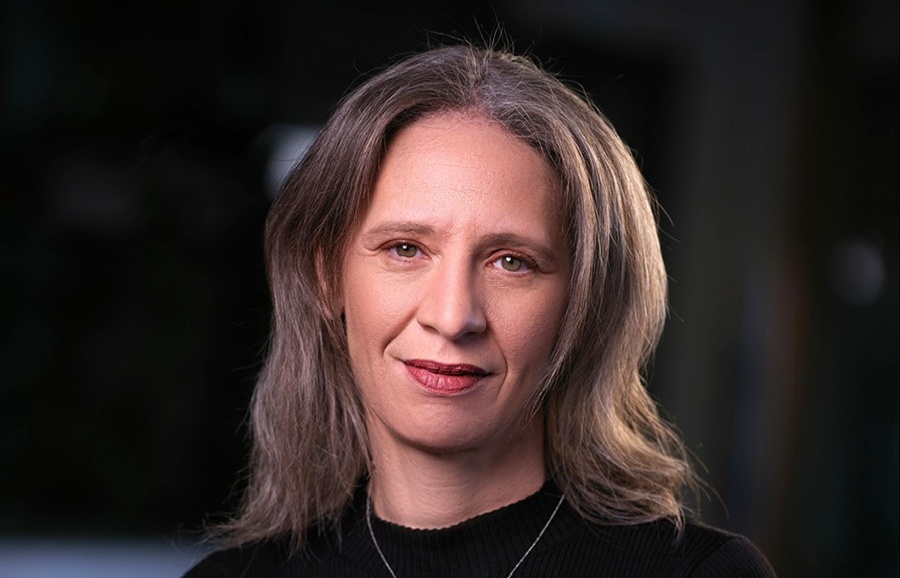
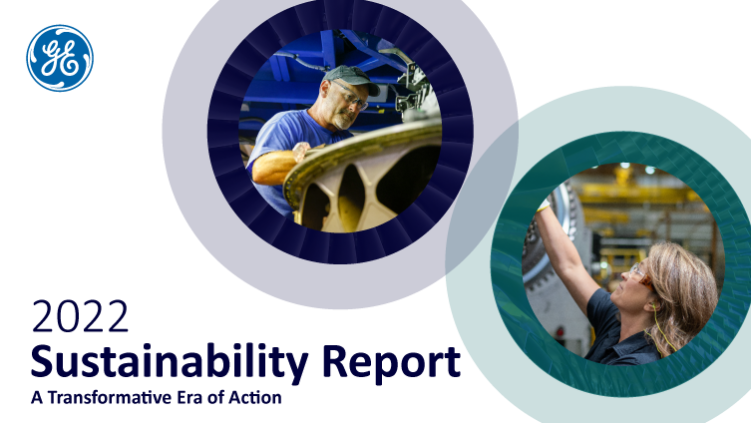
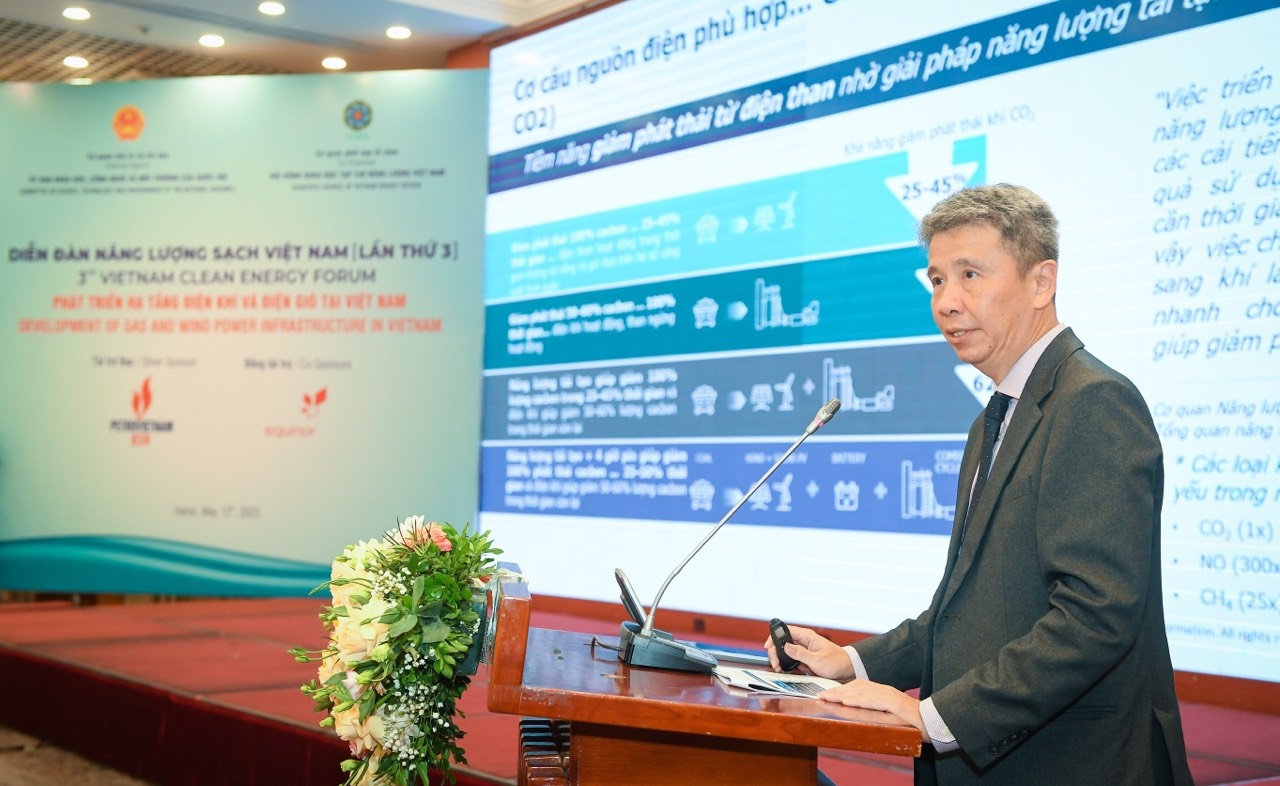

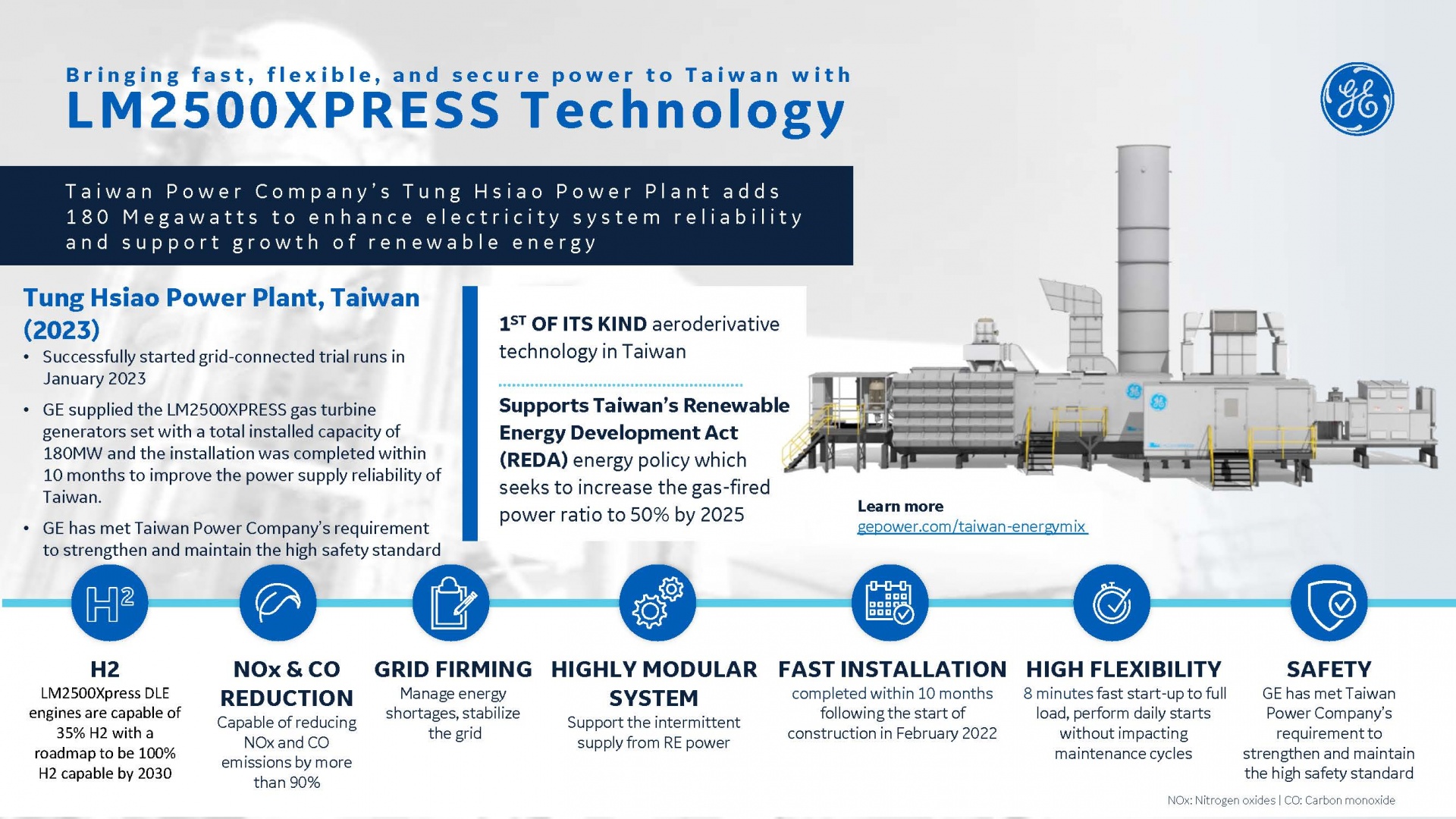


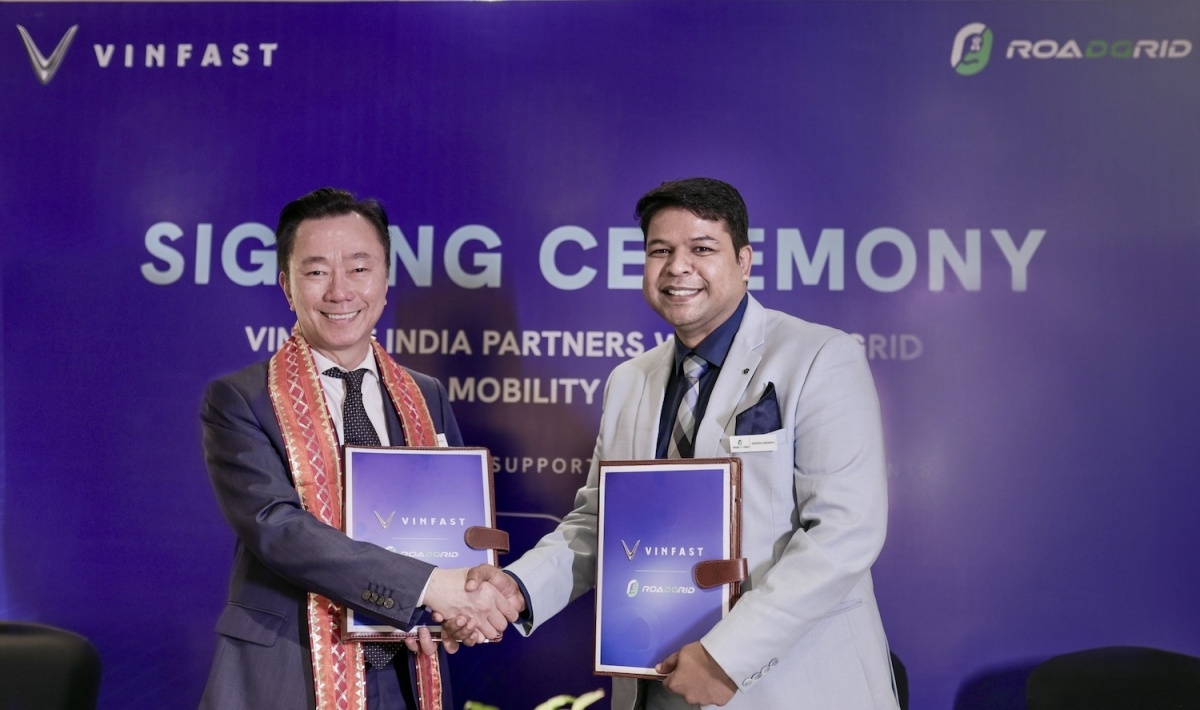






 Mobile Version
Mobile Version